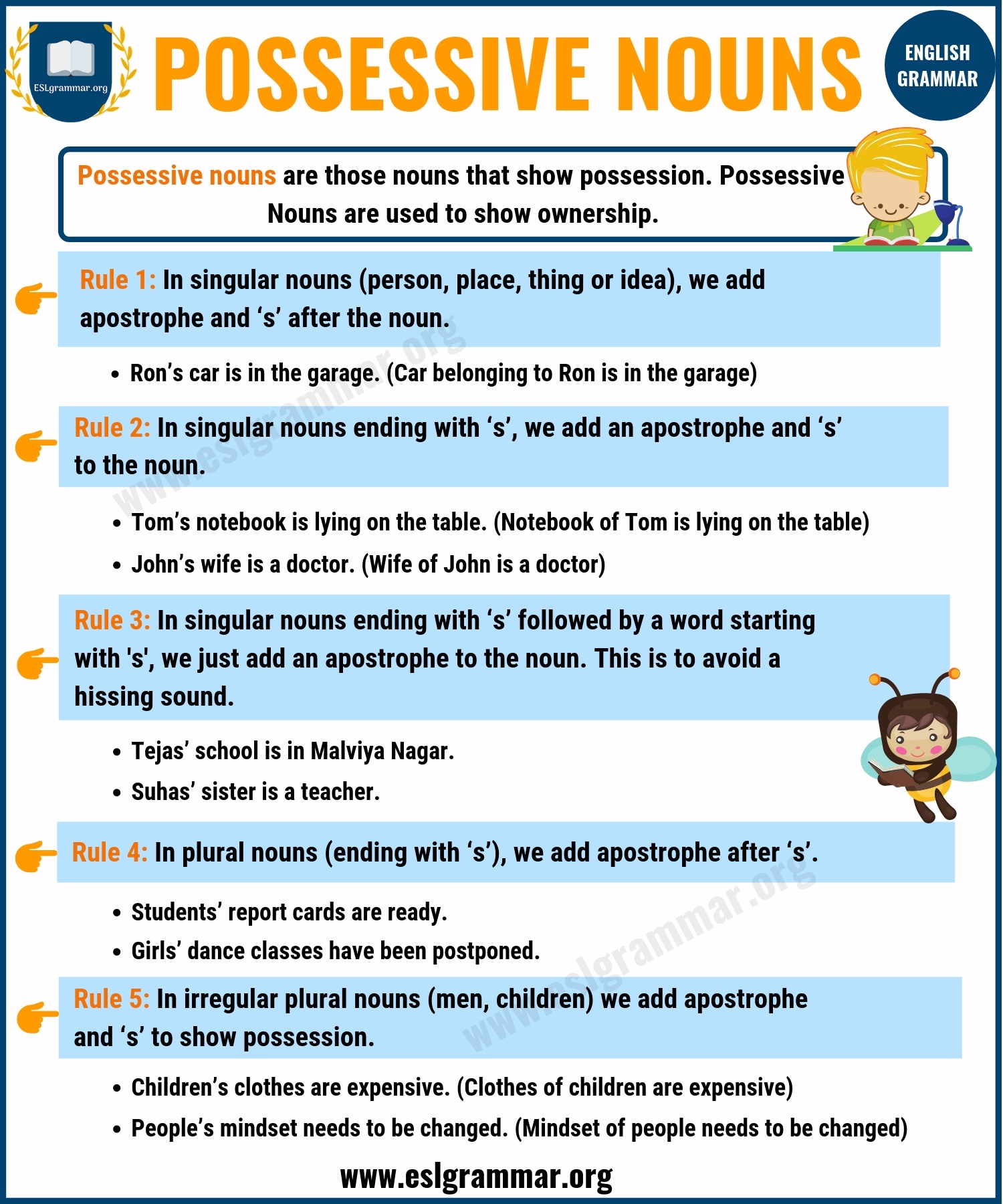When it comes to understanding grammar rules, possessive nouns can sometimes be tricky to master. One particular type of possessive noun that often confuses people is the plural possessive noun. Understanding how to correctly use plural possessive nouns is important for clear and effective communication.
In English grammar, possessive nouns show ownership or relationship. Plural possessive nouns indicate that more than one person, place, or thing owns or is related to something. Knowing how to properly form and use plural possessive nouns can help in avoiding common mistakes in writing.
Plural Possessive Noun Example
One example of a plural possessive noun is “students’ books.” In this case, the apostrophe comes after the “s” because the books belong to more than one student. Another example is “workers’ union,” where the union belongs to multiple workers. These examples show how adding an apostrophe and an “s” to a plural noun indicates possession.
It is important to remember that when dealing with plural possessive nouns, the apostrophe always comes after the “s” if the noun is already in plural form. For example, “children’s toys” or “dogs’ leashes.” This rule helps in clarifying ownership and relationships in sentences.
Using plural possessive nouns correctly can enhance the clarity and precision of your writing. For instance, instead of saying “the employees break room,” you can say “the employees’ break room” to indicate that the break room belongs to the employees. This small change can make a big difference in the meaning of a sentence.
Overall, mastering the use of plural possessive nouns is essential for effective communication. By understanding how to form and use these types of nouns, you can convey ownership and relationships accurately in your writing. Practice identifying and using plural possessive nouns to improve your grammar skills and enhance the quality of your written work.
In conclusion, plural possessive nouns play a crucial role in grammar and writing. By following the rules and examples of plural possessive nouns, you can avoid common mistakes and improve the clarity of your sentences. Remember to place the apostrophe correctly to show ownership or relationships for plural nouns. Keep practicing and honing your skills in using plural possessive nouns for better communication.
